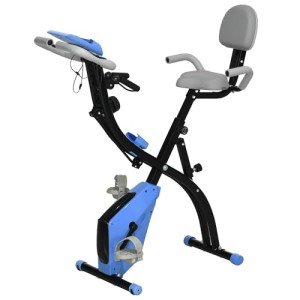Stationary Cycle for Exercise: A Comprehensive Overview
The stationary cycle, frequently referred to as an exercise bike, has actually become a favored device among fitness enthusiasts due to its flexibility, effectiveness, and ease of usage. This post looks into the numerous benefits of using a stationary cycle for exercise, the various types readily available, pointers for reliable workouts, and responses to often asked concerns.
Advantages of Using a Stationary Cycle
Stationary bicycle offer a plethora of advantages, making them an exceptional addition to any fitness routine. Here are a few of the crucial benefits:
1. Cardiovascular Health
Cycling on a stationary bicycle is an excellent way to strengthen the heart and improve overall cardiovascular health. click the up coming internet site can result in enhanced heart rate, increased lung capability, and better blood circulation.
2. Weight Management
For individuals seeking to shed pounds or keep a healthy weight, a stationary cycle provides a reliable ways of burning calories. Depending upon the strength of the workout, cycling can burn anywhere from 400 to 600 calories per hour.
3. Low-Impact Exercise
Unlike lots of types of cardio, cycling places very little tension on the joints. This makes stationary cycling an ideal workout for people with joint problems, injuries, or conditions such as arthritis.
4. Varied Workouts
With the introduction of sophisticated stationary bikes including programmable workouts, users can now delight in a wide array of training alternatives. From high-intensity period training (HIIT) to steady-state endurance trips, stationary cycling can keep users engaged and challenged.
5. Convenience
Stationary cycles enable people to work out from the comfort of their homes, eliminating the requirement to take a trip to a gym. This availability can promote consistency in exercises, which is important for attaining fitness objectives.
6. Enhanced Muscle Tone
Routine use of a stationary cycle can improve muscle strength and tone, especially in the lower body. It mostly engages the quadriceps, hamstrings, calves, and glutes while likewise engaging the core and lower back muscles for stability.
Types of Stationary Cycles
When thinking about a stationary cycle for exercise, it's essential to understand the choices available in the market. Here are the main kinds of stationary bicycles:
1. Upright Bikes
Upright bikes resemble standard bicycles and use an efficient cardiovascular workout while engaging the core and upper body.
2. Recumbent Bikes
Recumbent bikes have a larger seat and back support, permitting riders to being in a more relaxed position. This style is particularly helpful for those with back pain or those recovering from injury.
3. Spin Bikes
Constructed for high-intensity workouts, spin bikes are typically utilized in cycling classes. They normally have a heavier flywheel and permit standing pedaling, which helps with a robust training experience.
4. Dual-Action Bikes
These designs integrate moving handlebars, permitting users to engage the upper body while cycling. This can enhance calorie burn and offer a full-body workout.
Tips for Effective Workouts
1. Change Properly
Ensure the stationary cycle is appropriately changed for your height and leg length. The seat must be at hip level, and your knees should not extend beyond your toes when pedaling.
2. Warm-Up and Cool Down
Before starting your workout, take some time to warm up your muscles with a 5-10 minute easy pedaling session. Likewise, cool down later to prevent tightness and promote recovery.
3. Integrate Interval Training
Alternate in between high-intensity and low-intensity segments to maximize calorie burn and improve cardiovascular fitness. For instance, pedal at maximum effort for 1 minute, then recover at a slower rate for 2 minutes.
4. Stay Hydrated
It's important to drink water before, during, and after your workout, particularly for high-intensity sessions. Dehydration can cause fatigue and impede efficiency.
5. Listen to Your Body
Focus on how your body responds throughout exercises. If you experience pain or discomfort, customize the strength or take a break.
Frequently Asked Questions (FAQs)
1. How often should I use a stationary cycle?
For ideal outcomes, goal for a minimum of 150 minutes of moderate-intensity aerobic activity weekly. This equates to about 30 minutes on the bike, five times a week.
2. Can I drop weight using a stationary cycle?
Yes, stationary cycling can be an effective tool for weight reduction, supplied it is integrated with a balanced diet. Gym Bike For Sale from cycling can contribute considerably to shedding excess weight.
3. Is cycling on a stationary bicycle great for novices?
Absolutely! Stationary cycling is available for individuals at all fitness levels. Novices can begin at their own rate and slowly increase strength as fitness enhances.
4. What should I wear while cycling?
Use comfortable, moisture-wicking clothing and helpful athletic shoes. Padded shorts can also improve convenience during longer sessions.
5. Are there any health threats associated with stationary cycling?
While cycling is low-impact, it's important for individuals with specific health conditions to seek advice from a healthcare supplier before beginning any brand-new exercise program. Proper changes to the bike can likewise help prevent pain or injuries.
The stationary cycle provides an effective and flexible choice for those aiming to enhance their fitness levels while enjoying a low-impact workout. With numerous types readily available to accommodate different fitness choices and needs, in addition to the abundant benefits it provides, integrating a stationary bike into one's regimen can cause enhanced cardiovascular health, weight management, and overall fitness. Whether one prefers a casual trip or an extreme session, the stationary cycle is a tool that can help anyone accomplish their fitness objectives.

